If You Can Do These 6 Flexibility Tests, Your Joints Are 20 Years Younger
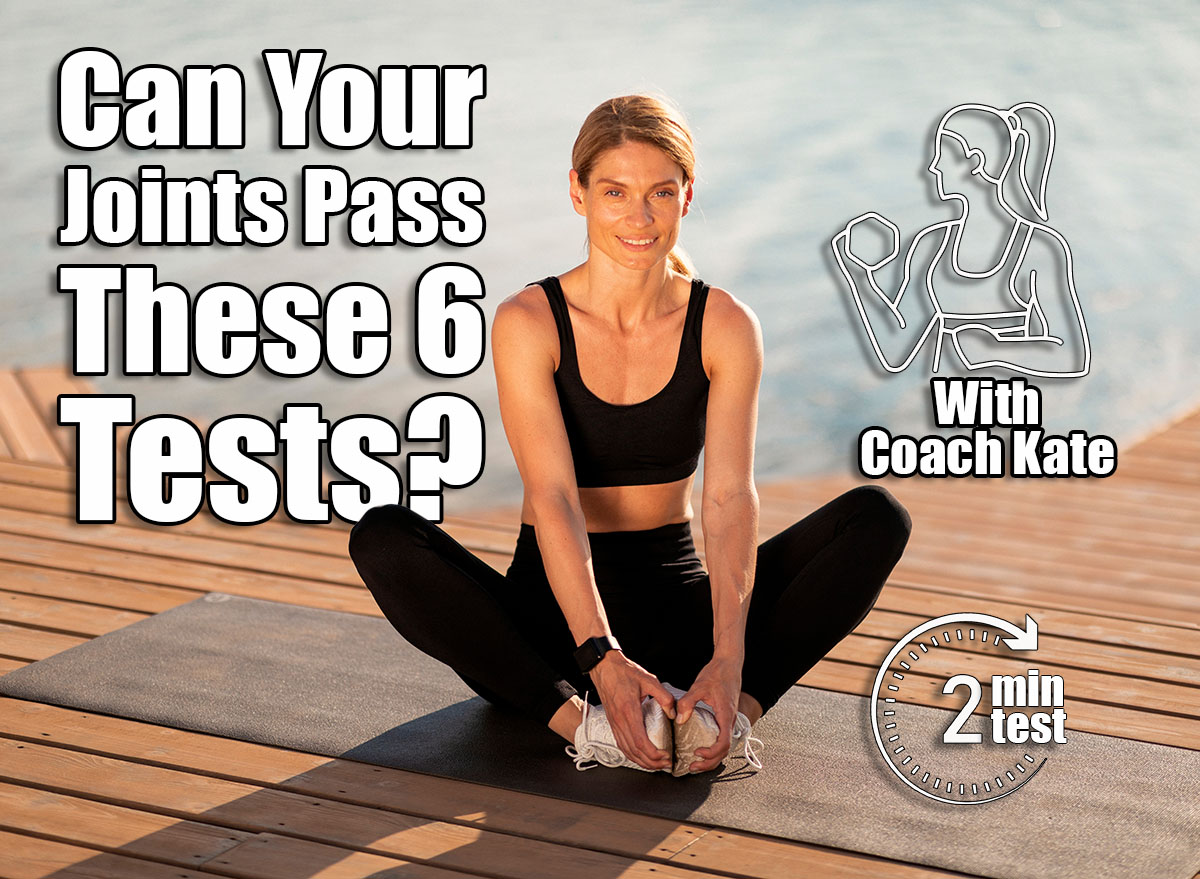
How much TLC do you regularly show your joints? As you age, your body naturally loses elasticity, which impacts how seamless you flow through your daily routine, says Kate Duncan, personal trainer and certified AFAA/NASM group exercise instructor from Walkingspree. When your body is too stiff or tight, your joints are unable to complete their full range of motion, leading to pain and discomfort. To help you out, Kate breaks down six crucial flexibility tests—if you can ace them, your joints are 20 years younger!
Sit and Reach Test
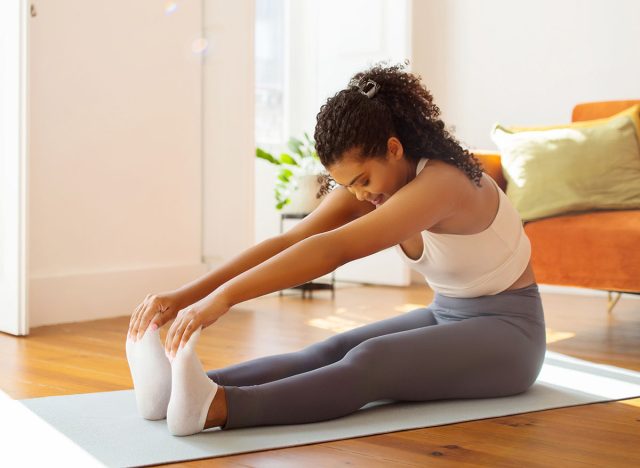
The sit and reach test has been a classic since gym class days—for good reason. It engages the lower back and hamstrings, both of which are crucial for mobility and posture.
- Begin seated on the floor with your legs extended.
- Reach your hands toward your toes.
Toe Touch Test
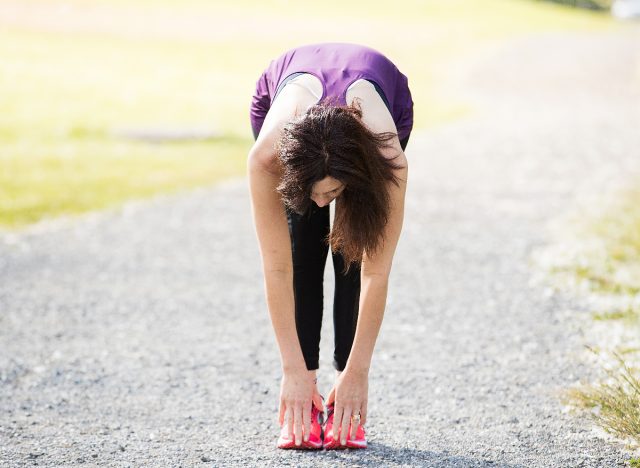
“Besides [the] hamstrings, [the toe touch test] also reveals lower back and calf tightness, and how your entire posterior chain is functioning,” explains Kate.
- Begin standing tall with your feet together or hip-distance apart.
- Keep your legs straight and arms at your sides.
- Gradually bend at the hips as you reach toward your toes.
- Hold for a few seconds at the bottom before returning to the start position.
Shoulder Reach Test
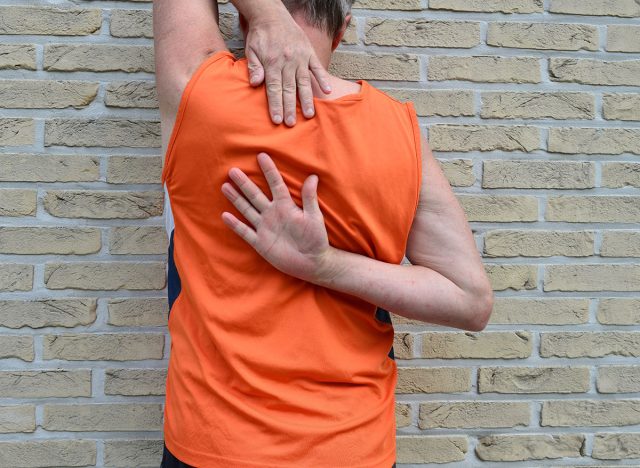
“The shoulder reach test—where you reach one hand over your shoulder and the other behind your back to try and touch fingers—is great for showing shoulder and upper back range of motion,” says Kate.
- Stand tall, keeping your shoulders relaxed.
- Reach one arm over your shoulder and down the back.
- Simultaneously reach the other arm behind your back and up.
- Overlap or touch your fingers.
- Repeat on the other side.
Wall Angel Test
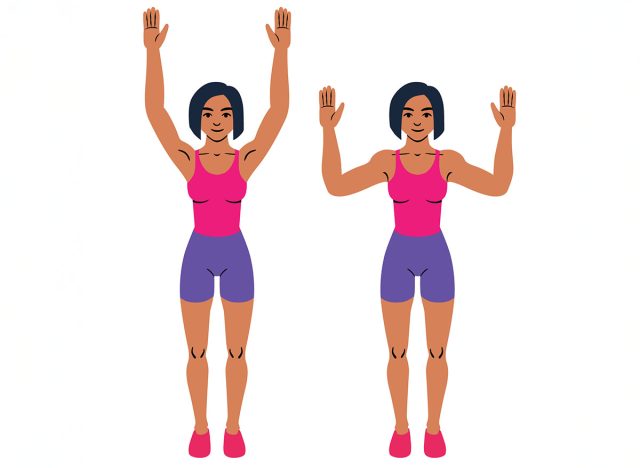
“The wall angel test is another favorite of mine,” Kate tells us. “You stand with your back against the wall with arms raised and try to slide them up and down while keeping your spine and elbows touching the wall. It’s a good test for upper back and shoulder mobility.”
- Stand tall with your back pressed against a wall and feet about 6 to 12 inches away.
- Make sure your head, upper back and glutes maintain contact with the wall.
- Assume a goal post position with your arms, keeping your elbows, forearms, and backs of hands against the surface.
- Slowly press your arms overhead, maintaining contact with the wall.
- Lower them to the goal post position.
The Spinal Rotation Test
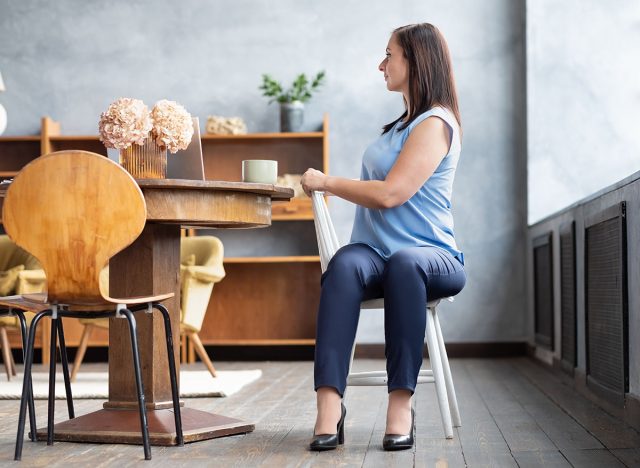
Limited rotation when performing the spinal rotation test can indicate tightness in the obliques or spine.
- Begin seated on a chair or workout bench with your feet flat on the floor.
- Cross your arms over your chest.
- Slowly rotate your upper body to one side.
- Go as far as you’re comfortably able to, maintaining an engaged core. Try to rotate at least 45 degrees to each side.
The Butterfly Stretch Test
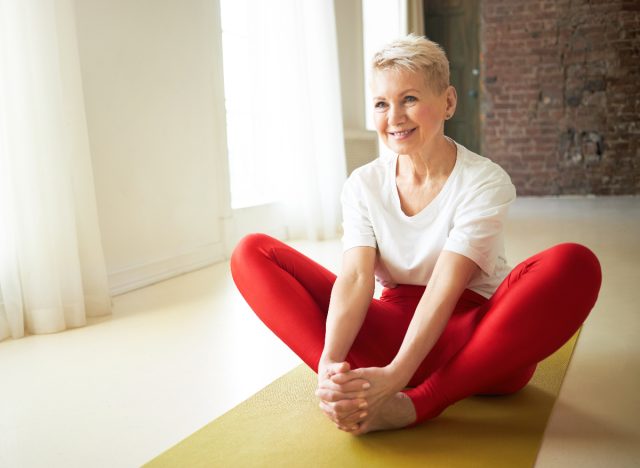
This stretch test shows inner thigh flexibility.
- Begin seated on the floor with the soles of your feet pressed together.
- Try to press your knees toward the floor.
- If your knees stay high or your back rounds a lot, this is a sign your adductors need some attention.